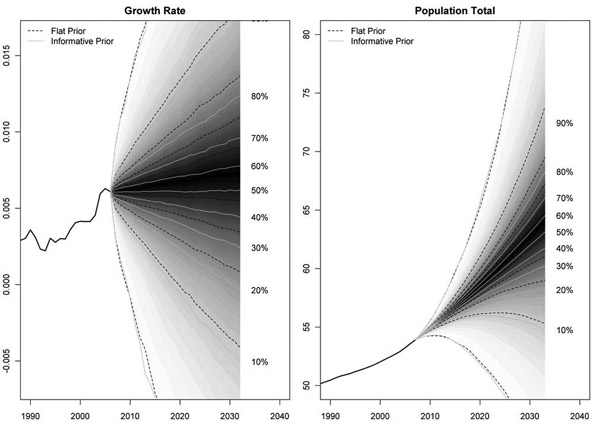Ex-ante assessments of the accuracy of forecasts (cont.)
The use of expert opinion can potentially be integrated with the statistical approach to estimating the uncertainty of forecasts using Bayesian methods. These incorporate expert opinion as to likely future population trends into the ARIMA or other statistical model of empirical trends as what is termed an ‘informative prior’.

Predicted probability distribution of the growth rate and population of England and Wales, 2007-2033, forecast using Bayesian time series methods.
Source: Abel et al. (2010) under the Open Government Licence v.1.0.
This approach is illustrated by the second set of confidence intervals in the previous figure, which are indicated by the white lines. These forecasts incorporate the growth rate in the 2008-based principal official national population projection for England and Wales as an ‘informative prior’ or best-informed estimate of likely future trends. Doing so reduces the forecast population somewhat and also produces slightly less uncertain forecasts.
Use of Bayesian time series analysis for population forecasting remains experimental. Appropriate methods are still under development but the approach is rapidly gaining support. It does not, however, abolish the inherent difficulty of trying to quantify the uncertainty of forecasts of what is an uncertain future.
In particular, the more confidence that is placed in prior expert judgement as to the future course of the input parameters, the narrower will be the final confidence limits for the forecast population. Critics of the Bayesian approach would argue that, just as no informed consensus exists about the most likely evolution of future demographic trends, no informed consensus exists about how uncertain we should be about our predictions of those trends.